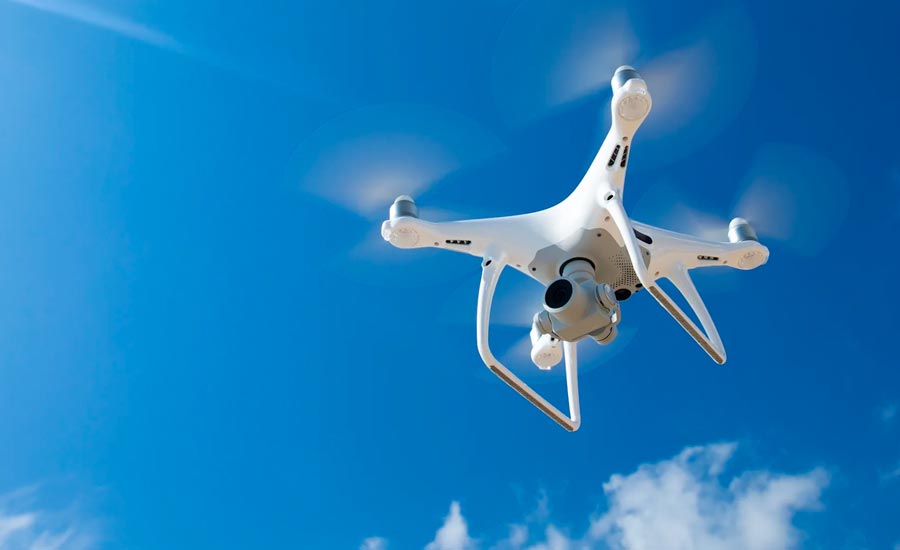Drones in the Private Security Industry

Introduction
The rapid advancement of drone technology has significantly impacted various industries, including the private security. Unmanned Aerial Vehicles (UAVs), commonly known as drones, have revolutionized surveillance, threat detection, and emergency response. With the ability to provide real-time aerial monitoring, drones enhance the efficiency and effectiveness of operations in the private security domain. Their integration into security systems offers a cost-effective, flexible, and technologically advanced solution for safeguarding people, assets, and infrastructure.
Requirement of Aerial Surveillance
Aerial surveillance is a critical component of modern security operations, enabling security personnel to monitor large areas with minimal effort. Traditional security measures, such as CCTV cameras and security guards, have limitations in terms of coverage and mobility. Drones address these challenges by providing:
- Enhanced Situational Awareness: Drones offer a bird’s-eye view, allowing security teams to assess threats from a safe distance.
- Rapid Deployment: They can be quickly deployed to survey a location, making them ideal for time-sensitive security incidents.
- Access to Hard-to-Reach Areas: Drones can monitor areas that may be dangerous or inaccessible to human personnel.
- Cost-Effectiveness: Reducing the need for multiple security guards and stationary cameras lowers operational costs.
Characteristics of Drones
Drones designed for security operations possess several key characteristics that enhance their functionality and effectiveness. These include:
- Autonomous and Manual Operation: Security drones can be operated remotely or programmed to follow predefined patrol routes.
- High-Resolution Cameras: Equipped with HD and thermal imaging cameras, drones provide clear visuals in various lighting conditions.
- Real-Time Data Transmission: They can stream live footage to control centres, allowing for immediate threat assessment.
- Long Flight Time and Range: Advanced drones have extended battery life and the capability to cover vast areas without frequent recharging.
- Night Vision and Infrared Sensors: These features allow drones to operate effectively in low-light conditions.
- Obstacle Avoidance and AI Integration: Intelligent drones can detect obstacles and use AI-based analytics to identify suspicious activities.
- Silent Operation: Some drones are designed for stealth operations, ensuring minimal noise and reducing the chances of detection.
Utility of Drones in the Private Security Industry
Drones have multiple applications in the private security sector, making them indispensable tools for modern security teams. Their primary functions include:
- Perimeter Surveillance and Intrusion Detection
- Drones can patrol large perimeters of industrial facilities, corporate buildings, and residential areas, reducing blind spots.
- Thermal imaging allows drones to detect intruders even in darkness or adverse weather conditions.
- Crowd Monitoring and Event Security
- During large gatherings, drones provide an aerial view to detect suspicious behaviour and crowd congestion.
- They enhance public safety by monitoring entry and exit points, helping to prevent stampedes or unauthorized access.
- Emergency Response and Disaster Management
- Drones assist in disaster situations by assessing damage, locating survivors, and guiding rescue teams.
- They can be used in hazardous environments where human intervention is risky.
- Surveillance of High-Risk Areas
- Facilities such as power plants, oil refineries, and data centres require continuous monitoring; drones ensure comprehensive coverage.
- Drones reduce the risk of physical breaches and potential sabotage.
- Crime Prevention and Law Enforcement Support
- Drones provide crucial intelligence to security teams, aiding in crime prevention and rapid response to incidents.
- They assist law enforcement by tracking suspects or vehicles in real time.
- Delivery of Security Equipment
Drones can transport security essentials, such as first-aid kits, communication devices, or emergency supplies, to remote locations.
Requirement to Establish a Control Centre
To effectively integrate drones into private security operations, a centralized control centre is necessary. This facility acts as the hub for drone deployment, monitoring, and decision-making. Key requirements for establishing a drone control centre include:
- Advanced Software and AI Analytics: Software integration allows for automated flight planning, object recognition, and anomaly detection.
- High-Speed Internet and Data Storage: A robust network ensures seamless communication between drones and operators.
- Trained Operators and Security Analysts: Skilled personnel are needed to interpret drone data and respond to security threats.
- Redundant Power Supply: Ensuring uninterrupted operations in case of power failures.
- Integration with Existing Security Systems: The control centre should be connected to alarm systems, surveillance cameras, and access control mechanisms for comprehensive security.
Command and Control Mechanism
An effective command and control (C2) mechanism ensures that drone operations are well-coordinated and responsive to security threats. The key aspects of a strong C2 mechanism include:
- Automated and Manual Controls: Operators should have the ability to switch between autonomous drone patrols and manual intervention when needed.
- Geo-Fencing and Flight Restrictions: Drones should operate within predefined areas to prevent unauthorized flights.
- Real-Time Communication with Security Teams: Drones should relay live video feeds and alerts to security personnel for immediate action.
- Multiple Drone Coordination: Advanced C2 systems allow for the simultaneous operation of multiple drones for enhanced coverage.
Follow-Up Response
Drones serve as the first layer of defence, but a well-defined follow-up response is essential for complete security solutions. After identifying a threat or anomaly, the security team should follow these steps:
- Assessment and Verification: Analyse live footage and determine the severity of the situation.
- Communication with Ground Security Teams: Relay real-time information to on-site security personnel.
- Deployment of Response Units: Dispatch security guards or law enforcement if necessary.
- Evidence Collection and Reporting: Store video footage for future investigations and legal proceedings.
- Post-Incident Analysis: Evaluate drone efficiency and improve security protocols based on incident reports.
Conclusion
Drones are transforming the private security industry by providing advanced surveillance, rapid threat detection, and improved situational awareness. Their ability to cover large areas, access difficult locations, and integrate with modern security systems makes them indispensable for ensuring safety and security. However, effective deployment requires a well-equipped control centre, skilled operators, and a robust command and control system. As technology advances, drones will continue to play a crucial role in the future of private security, offering unparalleled efficiency and reliability.
Maj. Gen. K Majumdar (R)


